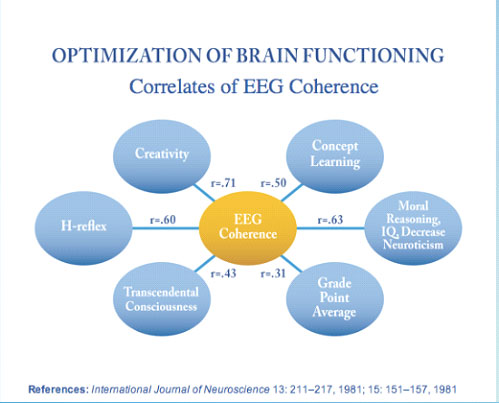I’ve heard that TM can lower your blood pressure, boost your creativity and help with anxiety. How can a simple technique create such a big effect?
This question has an interesting history. When TM was first introduced to the world by Maharishi in the late 1960s, academics and scientists questioned that a simple mental technique involving a mantra could help you sleep better, or have more energy, or focus better at school, as people were reporting.
Then the first research on TM was published by Dr. Keith Wallace in Scientific American in 1972. It showed that TM not only allowed the mind to settle down and reach a calm and peaceful state, but the body also reached a deep state of rest, as shown by slower breath and heart rate.
This was decades before the mind-body connection was properly understood, and today as a society we find it easy to grasp that if your mind is calmer, it’s going to cause your body to feel more relaxed too.
In fact, researchers now say that the majority of physical and emotional disease starts in the mind. The good news is that health can start in the mind too. The TM technique—which involves a mantra—produces a unique state of coherence and orderliness in your brain. Just as one example, recent studies show that during TM there is increased blood flow to the pre-frontal cortex, the “CEO of the brain,” resulting in improved planning, focus, creativity, short-term memory, decision-making, proactivity and broad comprehension—in other words, peak performance.
But it doesn’t stop there. Because the mind and body are intimately connected, when the mind settles during TM, the body also experiences deep rest and can unwind knots of stress. And when stress is less, doctors tell us, your mental, physical and emotional health naturally gets better and better.

